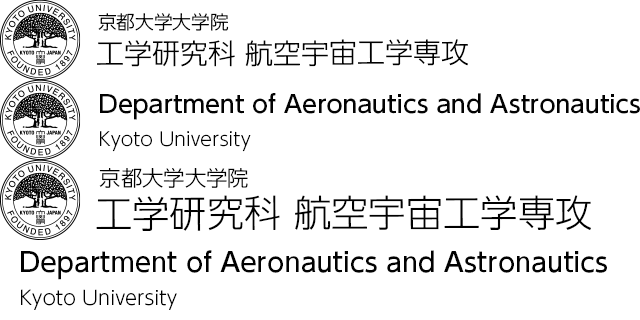History
The current Department of Aeronautics and Astronautics was formed in 2005, as the culmination of the events outlined below.
The predecessor of the current department, the Department of Aeronautical Engineering, was established on March 27,1942, during the Second World War. It was formed from two courses in the university's mechanical engineering school of the time. The department began operating on April 16, 1942, with a total of 35 students in three courses. Two more courses were added, on July 27, 1943, and a further course was added on November 23. The first batch of students in the department graduated on September 22, 1944.
Soon after the end of the war, manufacturing of aircraft and related research were prohibited by a directive of the Allied Forces. Thus, the Department of Aeronautical Engineering was shut down on January 9, 1946, and in its place a new department of applied physics offering four courses was set up. Throughout the tumultuous period following the war, and after the new university education system was started on January 31, 1949, the Department of Applied Physics steadily pursued education and research as a new department (the forerunner of basic engineering) in the Faculty of Engineering, and the graduates it produced attracted a lot of attention in Japanese industry.
On September 8, 1951, the San Francisco Peace Treaty was signed, and the prohibition on aircraft production and research was lifted. Then on April 1, 1955, the Department of Aeronautical Engineering was relaunched, and from 1958 it operated with a quota of 20 students. On April 1, 1964, a revised naming system for the courses was adopted. Instead of naming courses by number (Courses 1 to 6) the course names now reflected the course content (Fluid Dynamics, Aerodynamics, Propulsion Engineering, Structural Engineering, Vibration Control, and Aircraft Structures). Later, in response to the population growth in Japan, the student intake quota was increased provisionally, and from 1986 the quota was fixed at 25 students.
On June 24, 1994, when Kyoto University was restructured to give more importance to graduate schools, the Department of Aeronautical Engineering was reorganized and renamed as the Department of Aeronautics and Astronautics, and a seventh course exclusively for graduate students, Aerospace Dynamics, was added. In addition, the academic staff that belonged to the Department of Aeronautical Engineering in the Faculty of Engineering were relocated to the Department of Aeronautics and Astronautics in the Graduate School of Engineering. Furthermore, the Department of Aeronautical Engineering was integrated into the newly formed Department of Engineering Science, to continue the Basic Astronautical Engineering course. At this time the student quota was provisionally reduced, and then in 2002 it was fixed at 20, and it remains at this value today.
In 2005, The Department of Aeronautics and Astronautics was re-organized from the Department of Mechanical Engineering, the Department of Engineering Physics and Mechanics, the Department of Precision Engineering and the Department of Aeronautics and Astronautics in order to cope with recent development of scinence and technology and enhance the educational performance. The Department of Aeronautics and Astronautics, toghether with the Department of Micro Engineering, plays the important role in developing innovative technology with high flexibility and priority.
The original Department of Aeronautical Engineering towards the end of the war produced two batches of graduates, while the Department of Applied Physics into which it was transformed turned out 14 batches of graduates between 1946 and 1958. The total number of graduates produced by the department since 1959 is 1,200—including those from the revived Department of Aeronautical Engineering between 1959 and 1996, and those from the Basic Astronautics course in the Department of Engineering Science from 1997. Approximately 50% of graduates go on to work in the fields of aeronautical and astronautical engineering, while the rest work in other associated fields.
